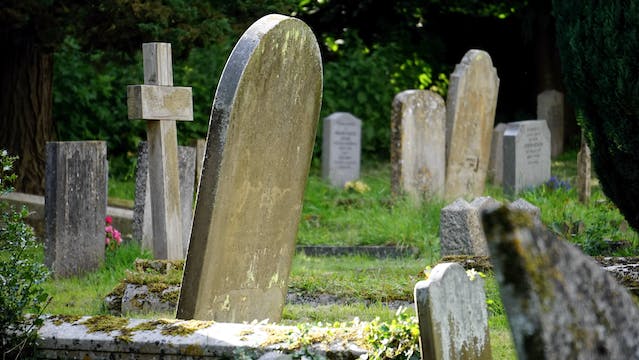
What is your risk of dying every year? It depends on your gender, age, race, where you live, and so many other factors, but it is possible to make a rough estimate of your chances of dying at every age.
A person’s statistical risk of dying at every age is useful knowledge for governments, the health industry, and the insurance industry. When you take out life insurance, they perform complex calculations to work out how likely you are to die from that point on and they set your premiums based on that calculation. If you are an overweight male in their 70s, your risk of dying is going to be higher than a healthy woman in her 40s and your life insurance premiums will reflect this. That doesn’t mean the man in his 70s will die before the woman in her 40s because there are a lot of unpredictable factors, but, probability-wise, his chance of dying is higher. This field of study is called actuarial science and it looks at risks in any field based on statistical probability.
How is the risk of dying worked out? Insurance companies and anybody who wants to find their risk of dying use something called a mortality table (or a life table if you want to be more positive). This is a table that looks at age and gives a percentage chance that a person of that age will die in the following year. It is written so that 0 is someone with no chance of dying (which doesn’t happen at any age) and 1 is a person with 100% chance of dying.
The first mortality tables were invented by John Graunt in 1661 and Edmond Halley in 1693. Graunt published mortality tables for London and Halley published a mortality table for the city of Breslau in what is now Poland. Graunt became able to make his table because Thomas Cromwell, King Herny VIII’s chief minister, performed a census in 1535. The Bubonic plague had greatly affected the population and Cromwell wanted to know how many people were in the country and where they were, ostensibly for tax purposes. He had the church keep a central record of births and deaths, which gave Graunt a data source to use for his mortality table. Before Cromwell’s action, all birth and death records were kept in local parishes and each parish priest had their own way of recording the information. Graunt’s table was a little imperfect, but it was the beginning of this field of statistics. Edmond Halley, he of Halley’s comet fame, made a mortality table using the data from 1687 to 1691 in the Polish town of Breslau. His tables were a little more exact and his calculations were used for years.
So, what is your risk of dying each year? A mortality table can look at the historical data and come up with a statistical risk that you will die every year. These mortality tables have to use data that is close to your situation, which makes them more complex. The early mortality tables looked at a general population and worked out the risk of dying, but there are many factors that increases someone’s risk of dying at any age. Wealth is one of them. Wealthy people generally live longer because they have access to more medical care. Race and gender are important. Women generally live longer than men. Diet, level of exercise, drinking, smoking, etc, etc, are all factors.
The general mortality table has age down one side, followed by the probability of dying before the next birthday with 1 being 100%, then the number of people surviving to the next birthday, then the number of people who die before the next birthday, then the expected remaining number of years, and various other pieces of data.
If you look at a table for the year I was born in – 1977, (2020 table for US men chosen at random because I couldn’t find the UK version), the first year is surprisingly dangerous and newborn babies have a 15% chance of dying, which makes sense because it is a difficult time. Once they make it through the first year, the risk of dying drops to 1%. The risk continues to drop for children until it reaches its lowest point at 0.2% for 11 year olds, which is the safest age, apparently. Then it starts to go up. I had a 1.3% chance of dying at 20, a 1.4% chance of dying at 30, and a 2.4% chance of dying at 40. I turn 47 this year and I have a 3.4% chance of dying before I am 48. Those are not bad odds. The risk of dying, obviously, starts to rise more quickly as we age. I will have a 4.4% chance of dying at 50, 9.6% risk at 60, 17% at 70, 38% at 80, and 100% at 88. That doesn’t mean that I will definitely die at 88, but it does mean that most men who are born in 1977 will not survive past 88.
This is interesting, but, of course, statistics are just probabilities and so many things can change them. For example, teenagers and early 20s males have a higher risk of car accident deaths and drownings. Living a healthy or an unhealthy life can affect so many things. Mortality tables make for very interesting reading. And this is what I learned today.
Photo by Mike Bird: https://www.pexels.com/photo/close-up-photography-of-concrete-tombstones-116909/
Sources
https://www.investopedia.com/terms/y/yearly-probability-of-dying.asp
https://www.investopedia.com/terms/m/mortality-table.asp
https://www.ssa.gov/oact/HistEst/CohLifeTables/2020/CohLifeTables2020.html
https://en.wikipedia.org/wiki/Life_table
https://upload.wikimedia.org/wikipedia/commons/4/47/Excerpt_from_CDC_2003_Table_1.pdf
https://en.wikipedia.org/wiki/Thomas_Cromwell
https://www.stat.rice.edu/stat/FACULTY/courses/stat431/Graunt.pdf
https://www.medicine.mcgill.ca/epidemiology/hanley/c609/material/BellhouseHalleyTable2011JRSS.pdf
https://www.who.int/news-room/fact-sheets/detail/adolescents-health-risks-and-solutions
